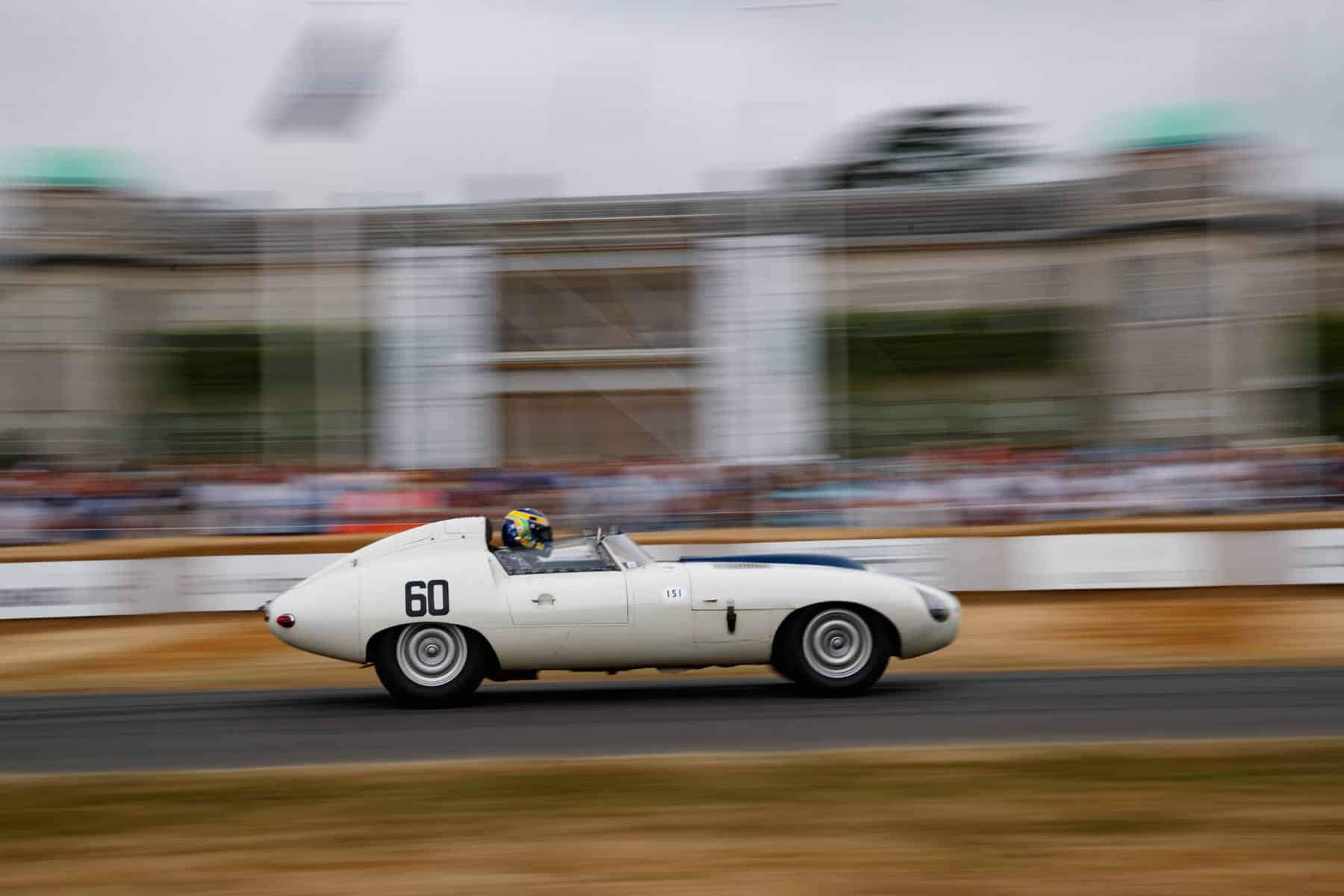Jaguar E2A
The "missing link" to the world’s “most beautiful car”
BY: WOUTER MELISSEN
Sixty years ago this year, Jaguar revealed the ground-breaking E-Type at the Geneva Motor Show. Reportedly described by Enzo Ferrari as “the most beautiful car in the world,” the E-Type was available as both a Roadster and Coupe.
Although strictly developed as a road car, the E-Type was, as its name suggests, a development of the Le Mans winning D-Type sports racer. In fact, there is a “missing link” that connects the two distinctly different cars. Known as E2A, it was a prototype for the production road car that was also raced at Le Mans.
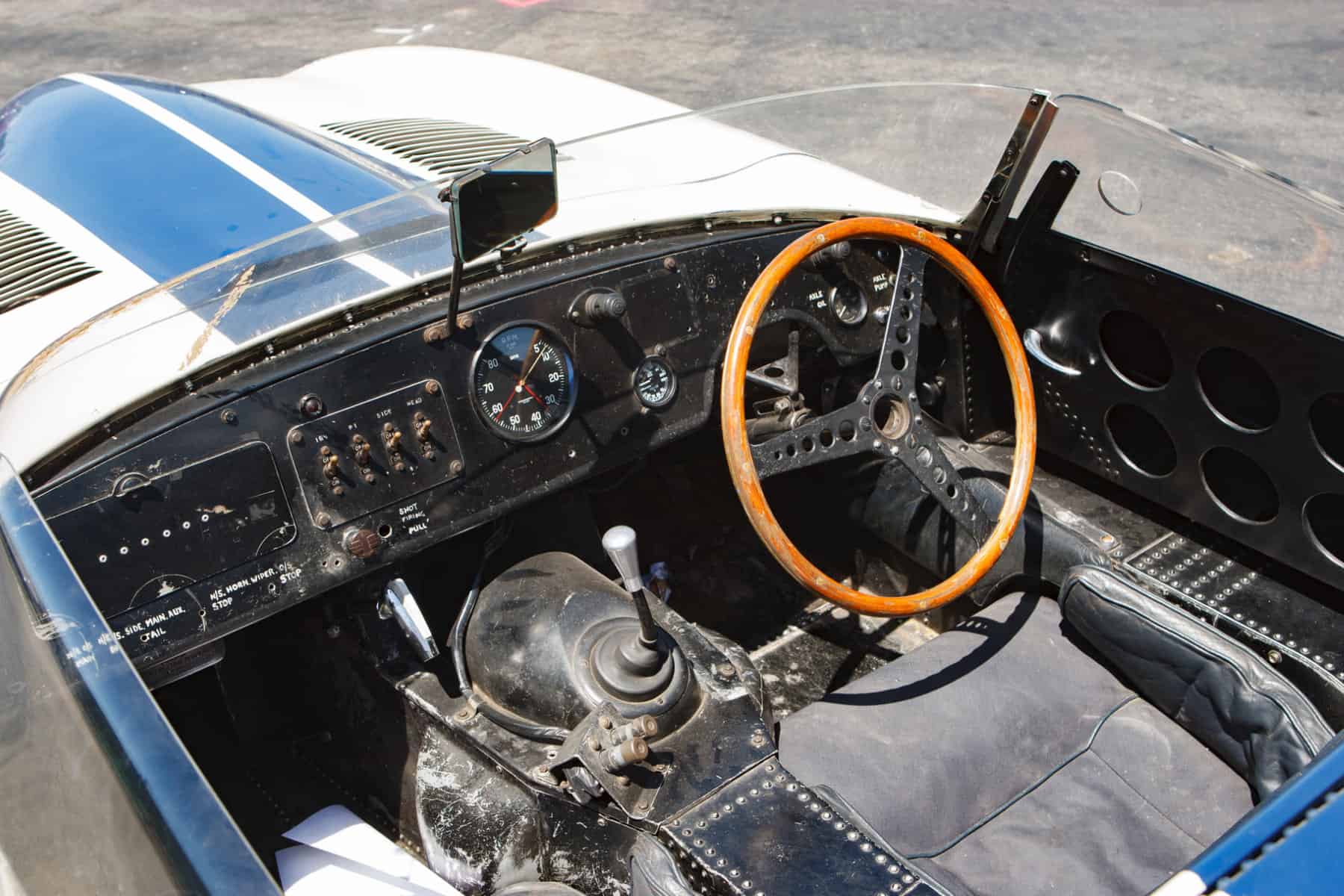
Developed ahead of the 1954 season, the D-Type replaced the two-time Le Mans winning XKC or C-Type. While both cars were powered by the familiar “XK” straight-six engine, the D-Type had an all new, revolutionary chassis. Instead of the more conventional tubular spaceframe, the “D” had a monocoque chassis from the firewall back. This configuration was inspired by military aircraft, which used the skin of the airframe as a stressed structure. In the case of the D-Type, this meant that there was no need for a separate body and chassis. The obvious advantage of using a monocoque type chassis was a considerable weight saving.
The front half of the car was more conventional and consisted of a steel subframe that was bolted to the monocoque. The separate spaceframe housed the front suspension and the XK straight-six engine. Attached to hinges on the front of the subframe was a massive, one-piece engine cover. The exterior design of the D-Type had been entrusted to Malcolm Sayer, who fittingly had been trained as an aeronautical engineer. For the bodywork, he used his experience working for the Bristol Aeroplane Company with a very slippery shape as a result. This was crucial, as the D-Type was designed mainly to win at Le Mans. And win at Le Mans it did, with the factory team in 1955 and again in 1956 and 1957 with Ecurie Ecosse.

After a Jaguar had scored four wins in the last six editions of the 24 Hours of Le Mans, Jaguar called it quits and curtailed the competition program at the end of the 1956 season. The talent that had been responsible for the successful racing cars was now called in to produce a new road-going sports car to replace the XK-series that had debuted as the XK 120 back in 1948. It was not surprising that they started with what they knew and produced a prototype that for all intents and purposes was a D-Type with a proper windscreen. Although it was officially known as the XK 101, it was more commonly referred to by its body number, E1A.
Like the D-Type, the E1A was a combination of a tubular frame and a monocoque rear half. A crucial difference was the fully independent rear suspension fitted to the E1A. This had initially been bolted directly to the monocoque together with the final drive unit. This resulted in excessive loads concentrated on just a handful of points. This issue was addressed by constructing a separate steel subframe to which all the drivetrain and suspension components were bolted. The subframe was then attached to the monocoque. In addition to distributing the suspension loads more evenly across the chassis, the use of a separate subframe also reduced the road noise. Built in 1957, E1A was tested extensively until it was scrapped at the factory early in 1959.

All the lessons learned with the E1A were incorporated in a second prototype. Known as E2A, it was built as a pure racing car early in 1960. Accordingly, it was fitted with a three-liter version of the XK engine to meet the displacement limit for sports prototypes that had been introduced in 1958. Equipped with Lucas fuel-injection, the downsized unit produced close to 300 hp. The twin-cam straight-six was mated to a five-speed gearbox with an aluminum casing. Visually similar to the D-Type, the E2A featured a longer nose and a cockpit with two proper doors. Like the D-Type, it featured a headrest behind the driver, to which a fin was added during the 1960 season. Carried over from the E1A was the independent rear suspension, which was superior to the live axle used on the D-Type.
The E2A was assembled during the first two months of 1960 and completed in time to start testing in the final weekend of February. It was submitted to extensive tests with the late, great Norman Dewis behind the wheel at the MIRA testing grounds. He was not particularly impressed and suggested several improvements. While the car met the international sporting regulations, Jaguar had no concrete plans to return to racing with a works effort. Like its predecessor, the E2A’s primary purpose was again to serve as a development mule for the upcoming E-Type.
That the car did make it to the track was the result of a well-timed visit by American Briggs Cunningham. Throughout the 1950s, he had fielded cars at Le Mans and other major sports car events around the world. During the first half of the decade, he produced his own competition cars but also campaigned cars produced by the likes of Ferrari, OSCA, Corvette, and also Jaguar. In fact, in 1956 he had become a Jaguar importer and through this association fielded a trio of D-Types. For 1960, he did not really have a car to race at Le Mans, which prompted him to visit the Jaguar factory with his lead driver Walt Hansgen and mechanic Alfred Momo.
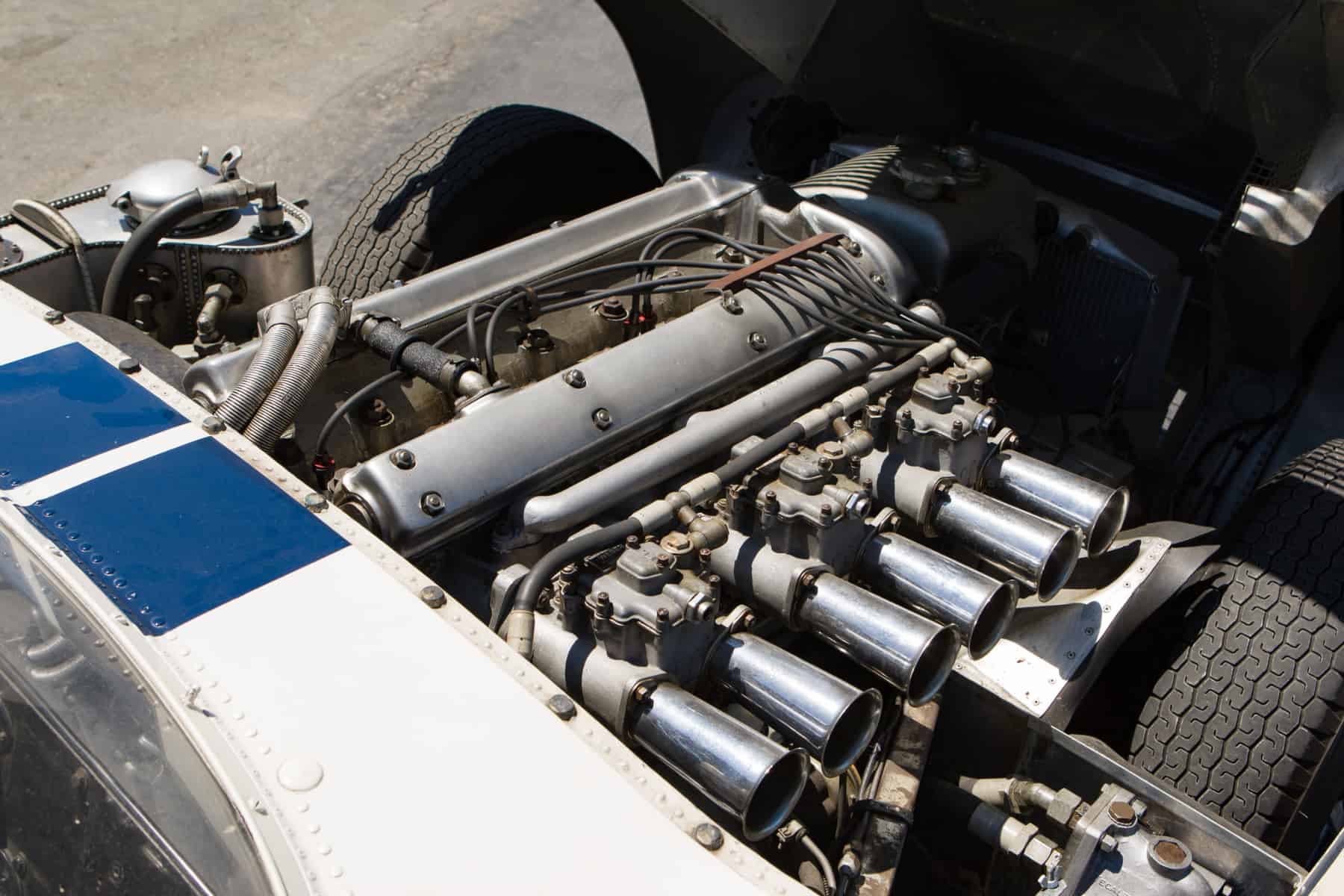
Jaguar founder William Lyons and Cunningham agreed to a deal that would be advantageous for both parties. The new E2A would be loaned to Cunningham, so he had a car to race at Le Mans. For Jaguar this allowed for the development prototype to be properly tested without attracting all the attention of an official works effort. For Jaguar, it was a very serious project and the imminent Le Mans entry saw the test and development work increase in intensity. The suspension was refined, while a four-speed D-Type gearbox was fitted. The engine proved troublesome, as had been the case with the 3.0-liter units fitted to customer D-Types late in its competition career. A new engine was built, which ran more smoothly than the original.
Still unpainted, the E2A made its public debut at the official Le Mans test early in April of 1960. Shared by Hansgen and Ed Crawford, it placed a promising third overall. Two months later, the car was back, resplendent in the American racing color of white with a pair of blue stripes. Instead of Crawford, it was BRM Grand Prix driver Dan Gurney who shared the driving duties with Hansgen. When the car was offered for sale with auctioneer Bonhams many years later, Gurney vividly recalled racing the Jaguar: “The drive in that Jaguar was a big pearl for me. And it was a privilege to be sharing it with Walt Hansgen, one of my heroes. But we’d had some difficulty with the car’s handling. It was new, this was its first race, and the Jaguar engineers running it regarded Le Mans as their specialty.
“But at first that car had been difficult to drive just down the straightaway. The least disturbance would send it into a series of tank slappers. My co-driver Walter Hansgen was such a faithful Jaguar man, he didn’t criticize, but I guess I was only interested in trying to win. I felt that if we left the car the way it was and it rained, we’d be in real trouble.” Gurney continued: “So I made myself unpopular by tenaciously asking ‘Can’t we find why it is doing this?’ with Walter standing quietly, like it didn’t bother him. Through my constant questioning, we finally found that they’d set up the car at the MIRA test ground with a fair amount of toe-out on the rear wheels. If the car leaned just a little, one way or the other, it was leaning on a wheel which would direct the tail in a different direction. We got them to change it, and it became a normal, good handling car…”
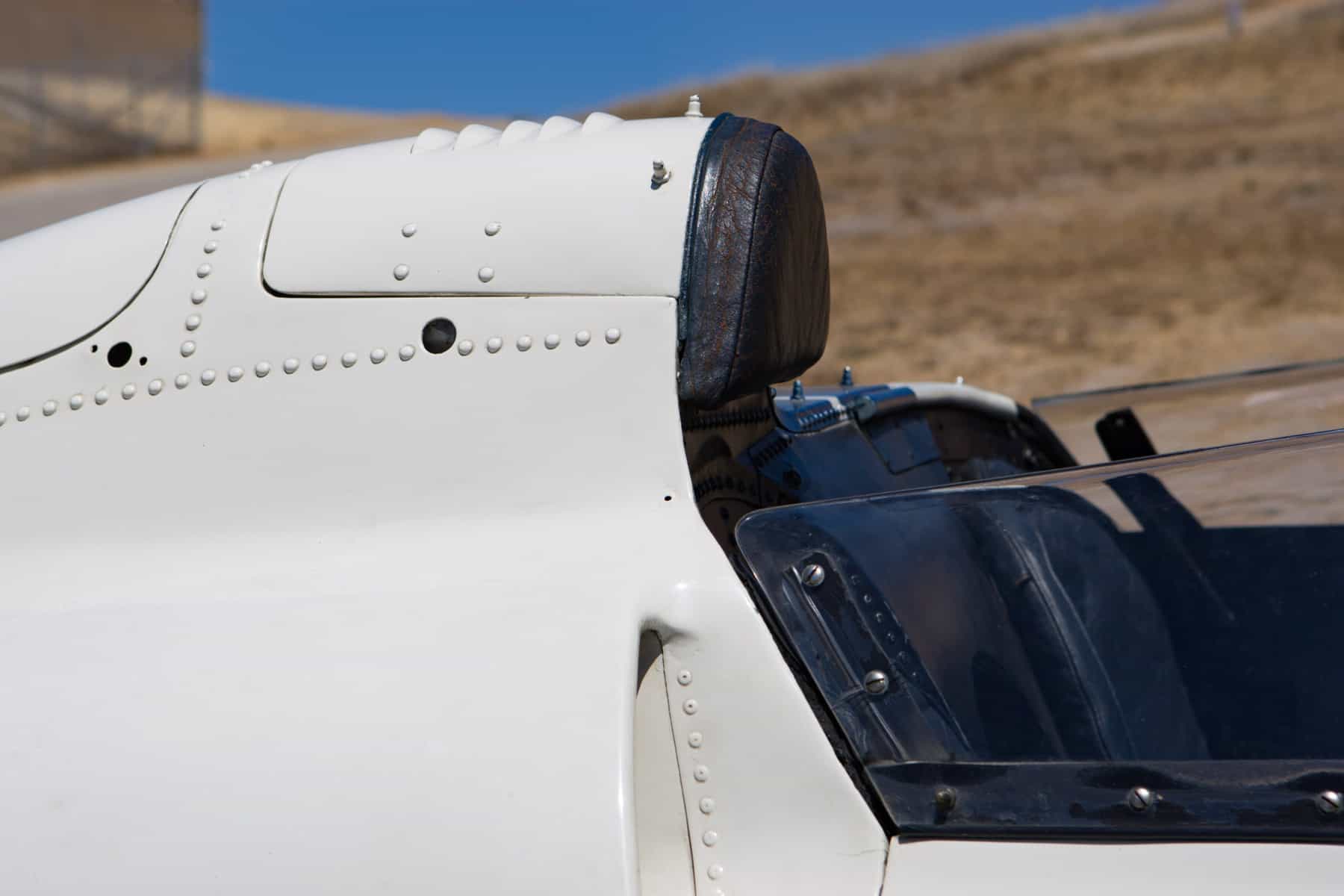
Gurney’s suggestions indeed worked and the car was reportedly the fastest down the long Mulsanne Straight. In the race, the E2A was pitched against a fleet of Ferraris, which were powered by the company’s well-honed V12. This twelve-cylinder engine was both powerful and very reliable. The latter was historically an issue of the 3.0-liter version of the XK. The 1960 Le Mans proved no exception, as Hansgen ran into trouble by lap three. He had to come back to the pits to have a split injector pipe replaced. Sadly, the damage was already done, as the piston that had been running lean was already burned. The car soldiered on but by the sixth hour, the car had to be retired with a head-gasket failure.
Despite the disappointing result at Le Mans, Cunningham was impressed by the E2A. He convinced Jaguar to loan him the car again for several races in North America. Before the car was shipped across the Atlantic, it was fitted with a tried and trusted 3.8-liter engine. Immediately after arriving on the docks of New York, it was entered for a SCCA race at Bridgehampton. Hansgen qualified the E2A on pole and went on to grab the win. Later in the year, the E2A was also raced by Jack Brabham at Riverside and then at Laguna Seca by his Cooper Formula 1 teammate Bruce McLaren. No more victories were scored, however. After its final race, at the end of October, the development prototype was shipped back to Coventry.
Upon its return to the Jaguar factory, it was modified to test the new Dunlop Maxaret anti-lock braking system. Known as the “Wheel Slide Protector” system, it was also fitted to the Ferguson P99, which is the only four-wheel drive Formula 1 car to win a race. Although the Dunlop ABS was later removed, the car still boasts a “SHOT FIRING-PULL” button. This had to be pressed to chalk-mark the road once the system was activated. Set aside for several years, Jaguar pressed the car into service once more, to serve as a decoy during the tests of the mid-engined XJ13 at MIRA. The fin was removed, and E2A was painted in the same color green as the XJ-13.

Meanwhile, Jaguar had revealed the E-Type production car. This was a further development of the D-Type, and the E1A and E2A prototypes. Crucially, it featured a semi-monocoque chassis that was based on the design first used for the D-Type. The E-Type also benefitted from the independent rear suspension created for the E1A. The nose, in particular, was clearly inspired by the E2A. A better matching, more elegant tail was fitted to complete the E-Type design we all know and love today. The engine fitted was definitely not the troublesome fuel-injected 3.0-liter unit used by the E2A at Le Mans but a 3.8-liter XK unit, fitted with three SU carburetors.
Having served its purpose, the E2A was destined to be scrapped, which was normal practice for development prototypes. For a second time, the fate of the E2A was determined by a visitor to the factory. This time it was Penny Griffiths, who came to have her family’s poorly running E-Type Lightweight sorted. Here she met Roger Woodley, who looked after the customer competition cars and would be her future husband. Woodley loved the E2A and was well aware of the plans to destroy the car. He pleaded on behalf of the car to Jaguar CEO “Lofty” England and convinced him that his father-in-law, Guy Griffiths, would be the perfect custodian for E2A. Griffiths could place the car on public display in his Camden Car Collection museum.
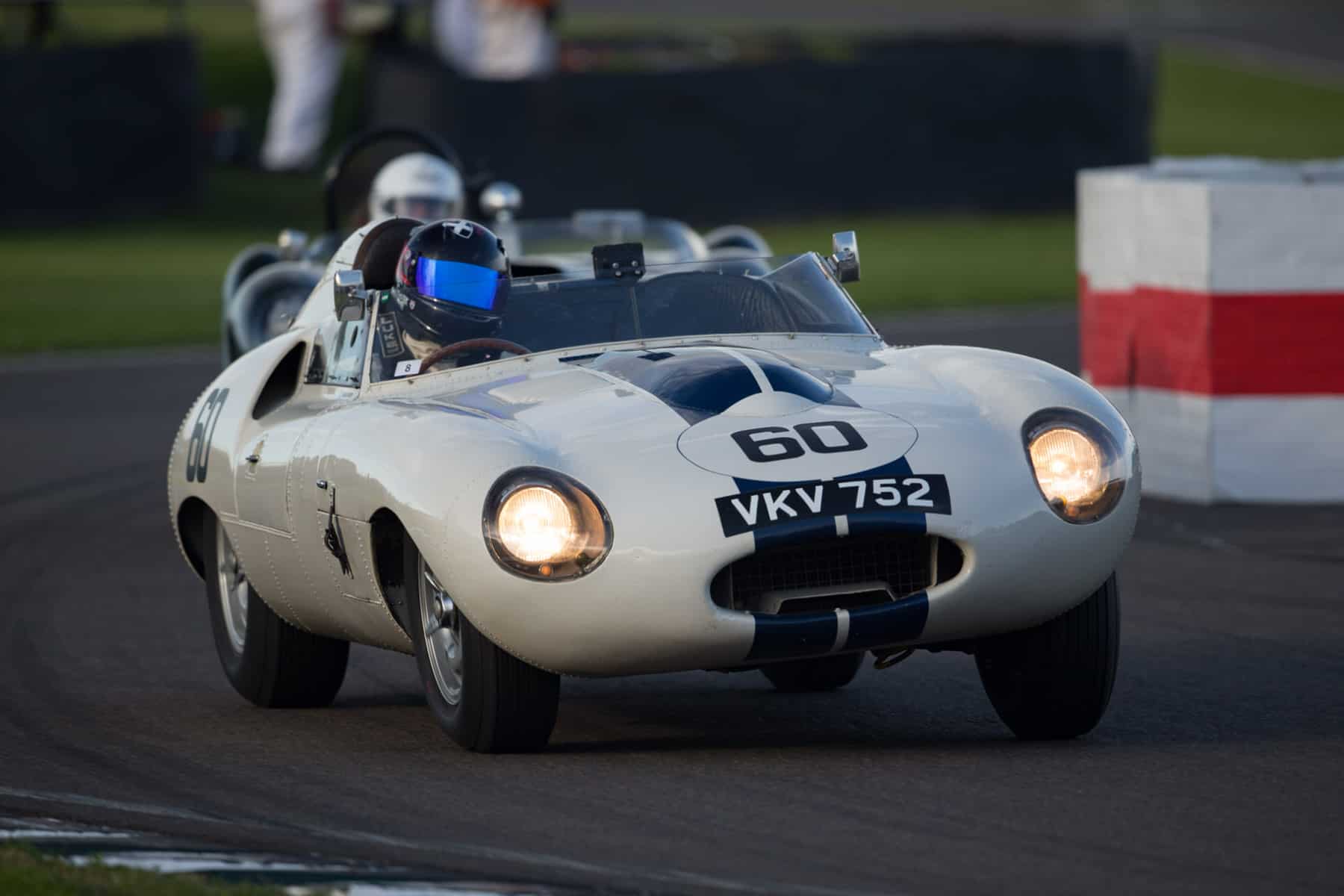
Fortunately, Lofty England made an exception for E2A and agreed to sell the car to the Griffiths family. Before taking delivery, the bodywork was straightened out and subsequently repainted in its Le Mans colors. As part of the deal, the car was shipped with a spare 3.0-liter engine, complete with Lucas fuel injection system. For obvious reasons, the 3.8-liter engine that was installed in the car was never removed. Believed to be among the clauses in the sales agreement was a stipulation that the car was not to be raced. Maintained to full running, it was indeed shown at the Camden Car Collection museum and also demonstrated during the next forty years. In 2008, it was consigned by the Griffiths family to the Bonhams Quail Lodge sale, where it was sold to a Swiss Jaguar collector. Not restricted by any clauses, he has since returned to the track with the E2A campaigning at many events, including at the 2010 Le Mans Classic, fifty years after it was first raced.
When looking at the D-Type, E2A, and E-Type, the lineage is obvious. The development work on the two prototypes was crucial to make the E-Type drive as good as it looks. We should be forever grateful for the Griffiths family and Roger Woodley for their efforts to preserve their car, which is a formidable piece of Jaguar history.
